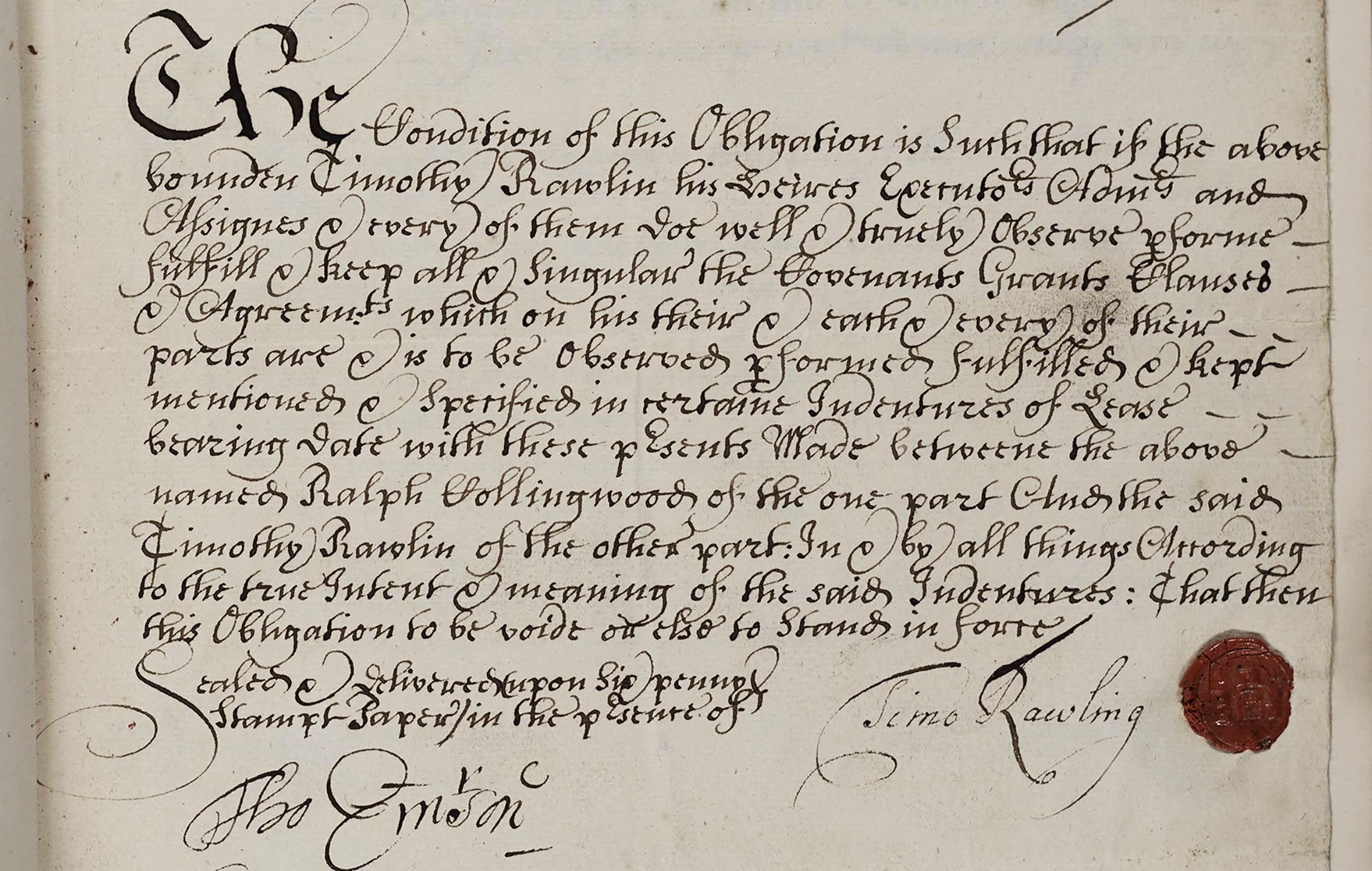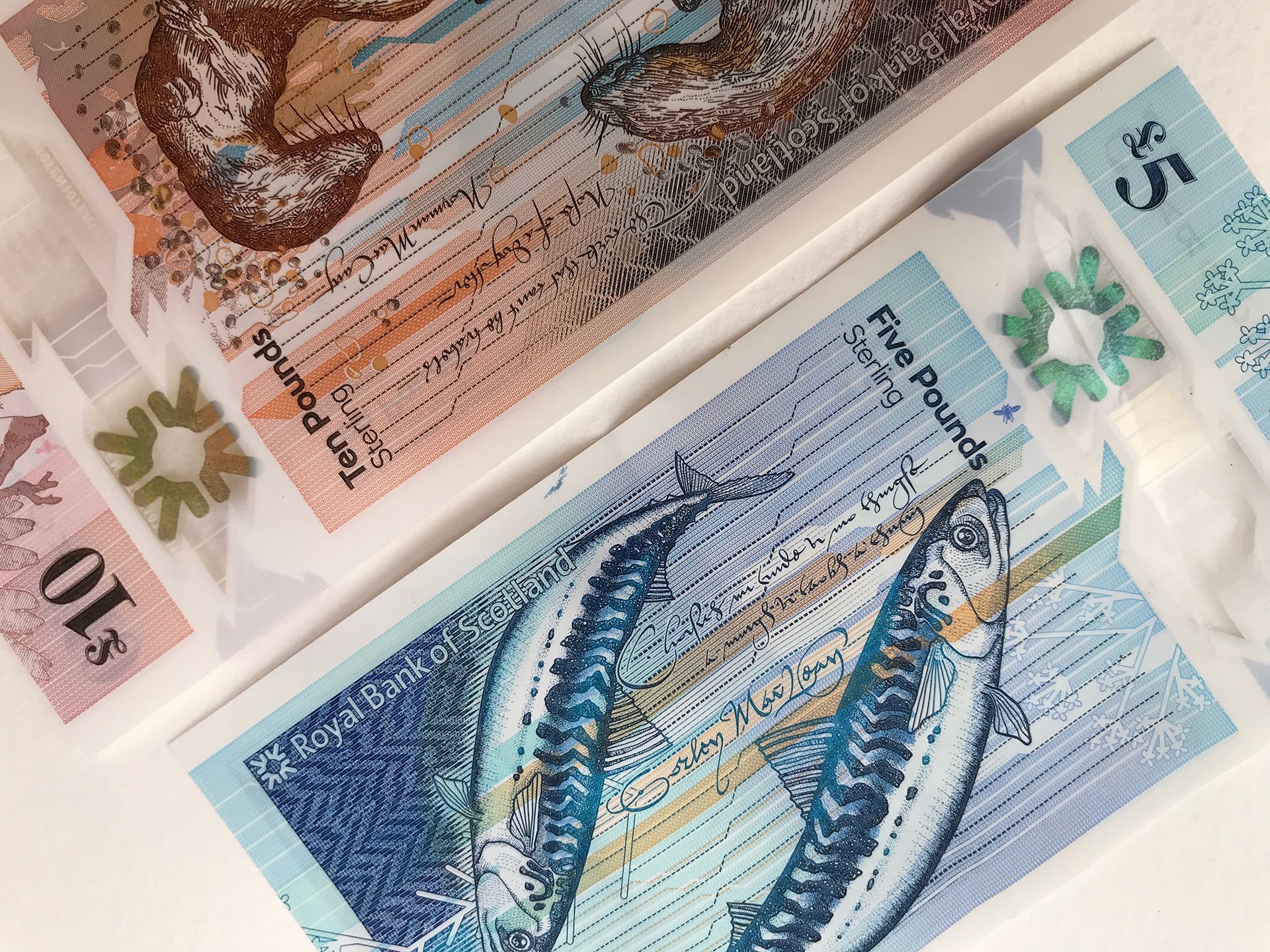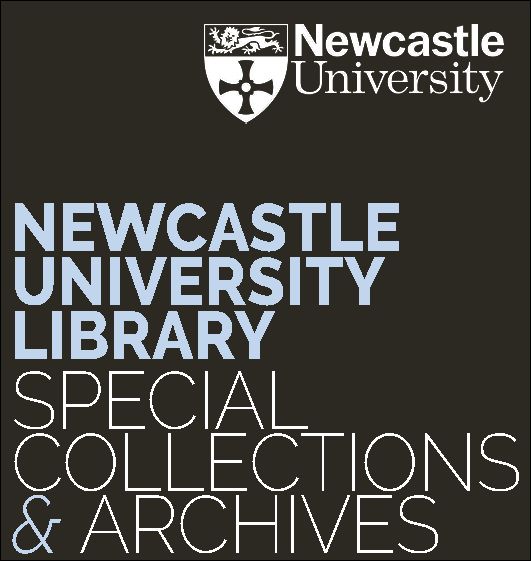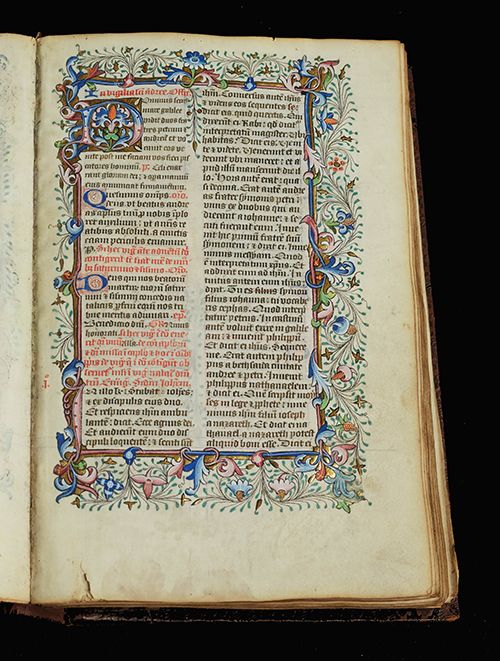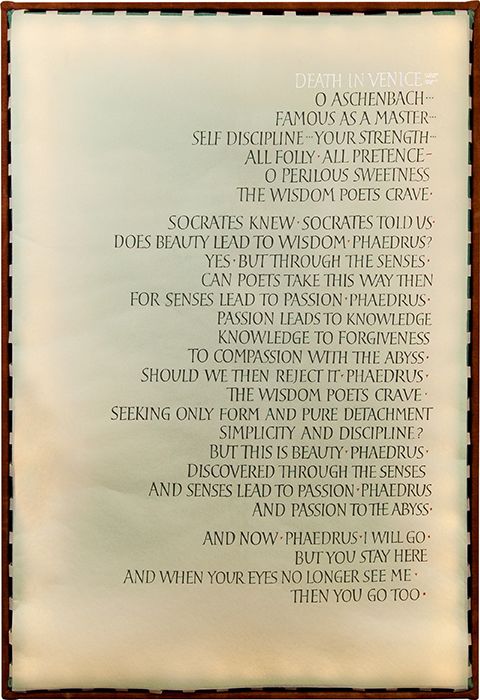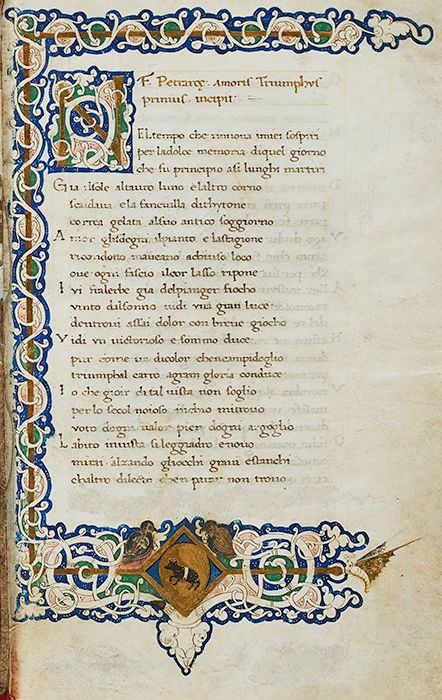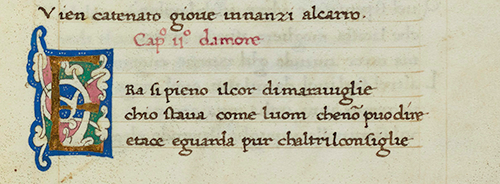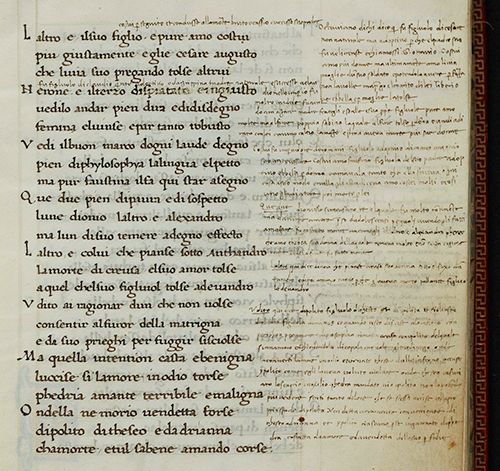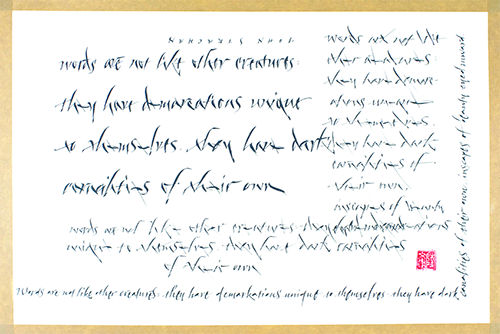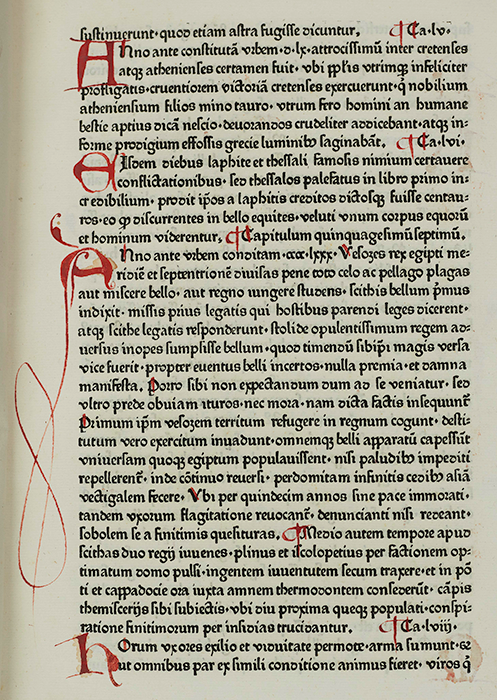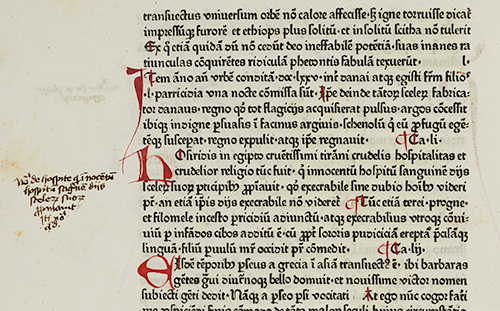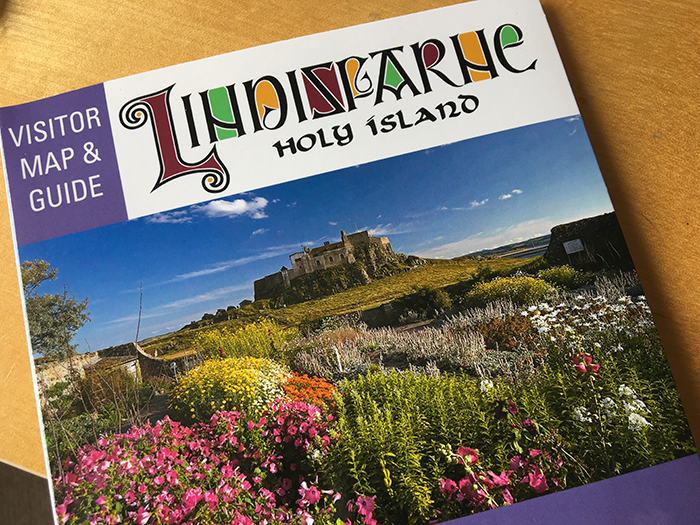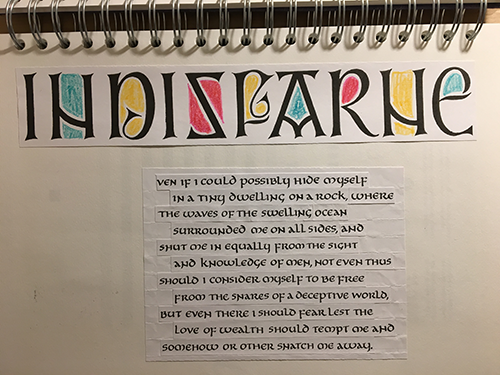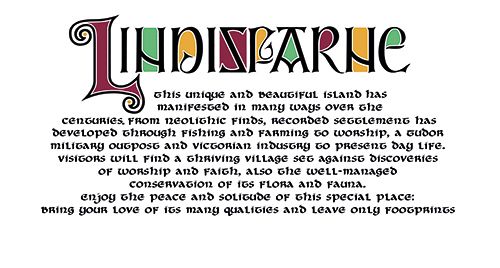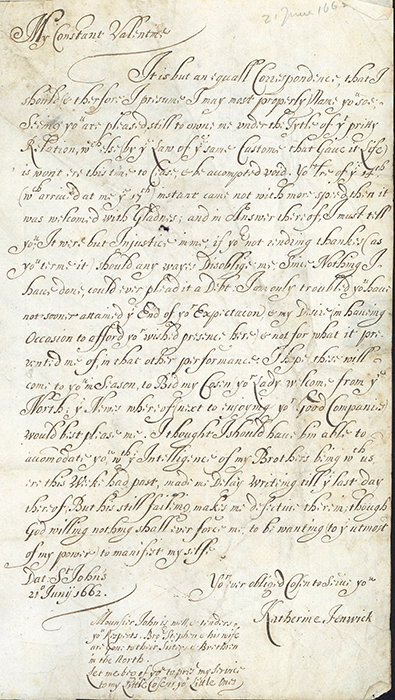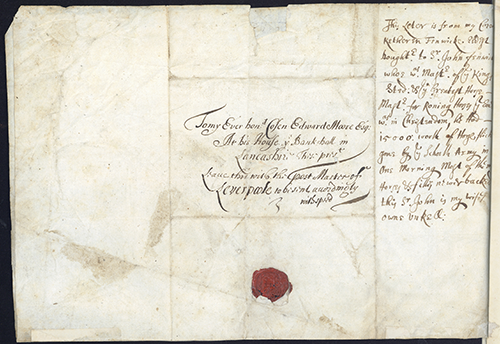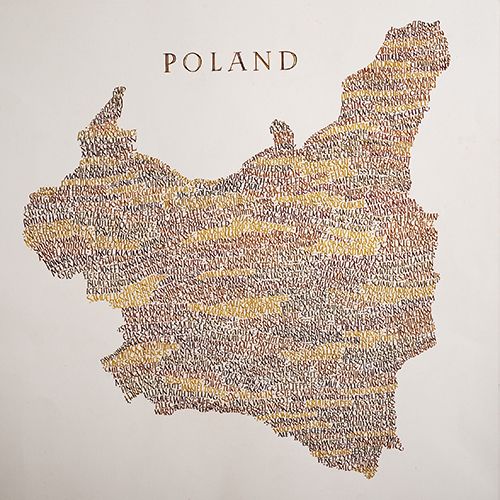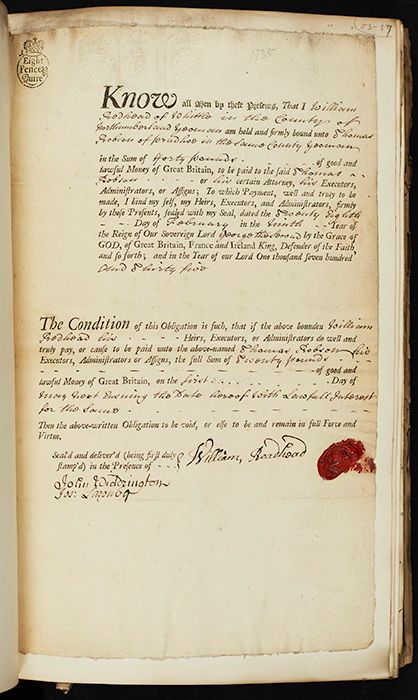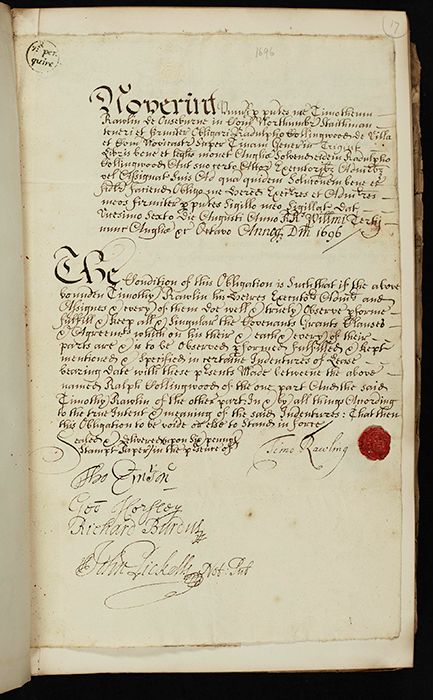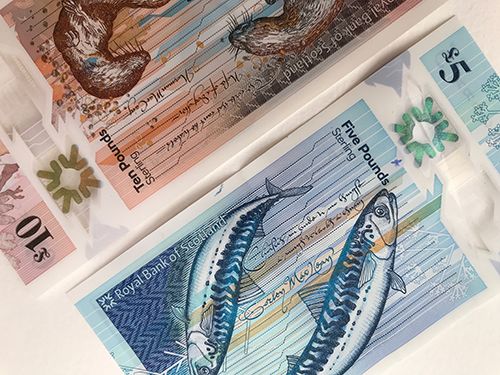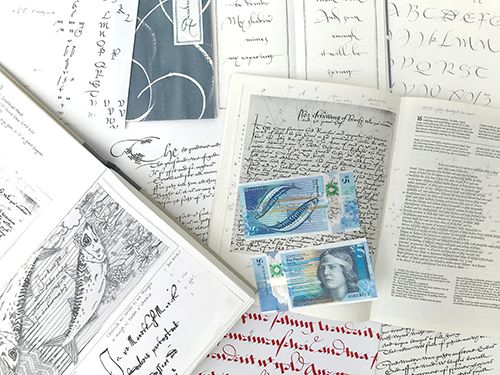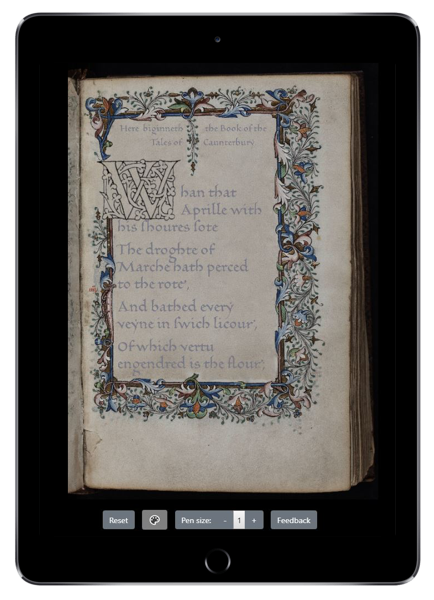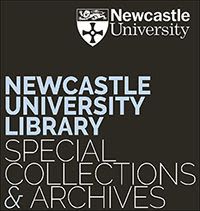The Art of
Handwriting
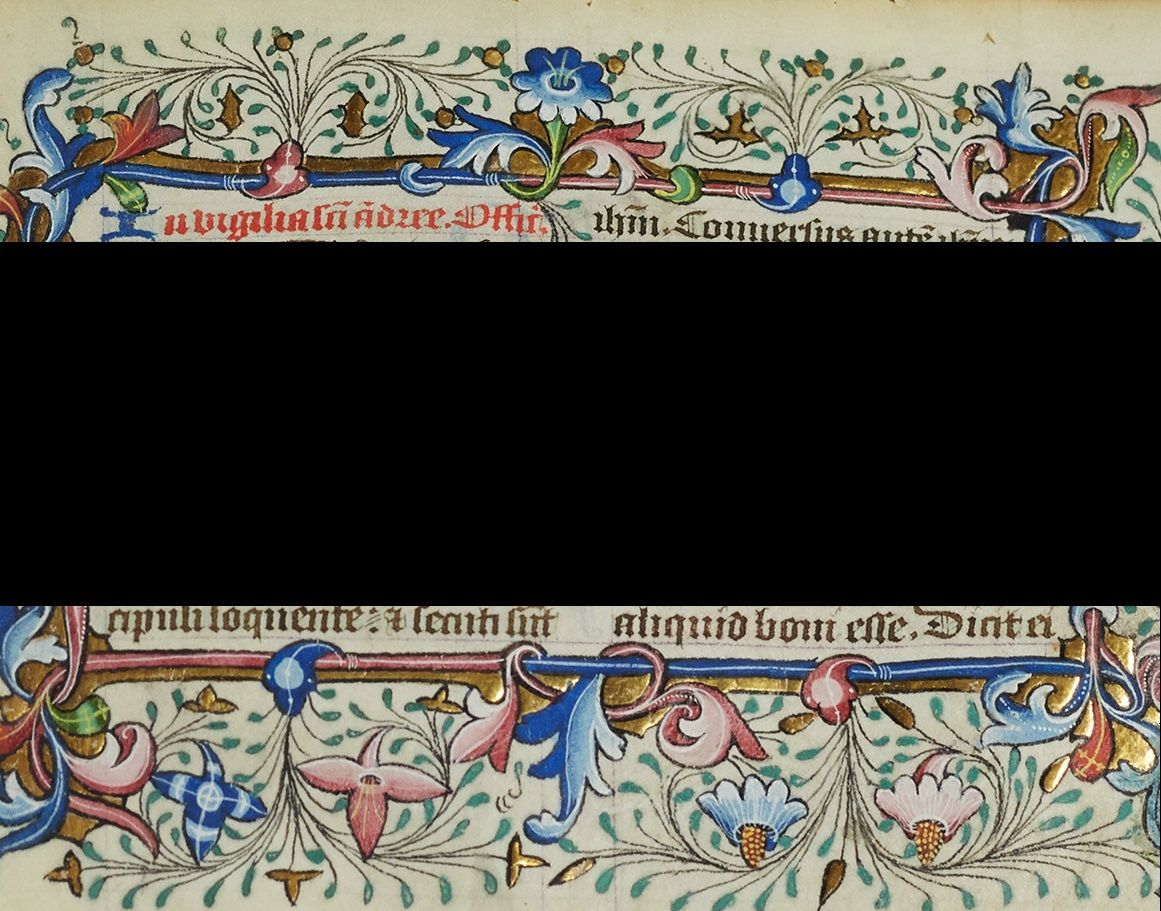
Since writing by hand first emerged around 5,000 years ago, it has remained a vital tool for recording and relaying information. Handwriting’s durability comes not from stability, but rather its ability to adapt to and coexist with new technological developments: from paper and pens to the printing press, the computer and the internet.
This exhibition investigates the changing role of handwriting. It brings together books and documents from Newcastle University Library's Special Collections and Archives with the work of contemporary calligraphers to explore handwriting’s place in our past, present and future.
This project is the result of collaboration between Dr Aditi Nafde and Dr Matthew Coneys; staff at Newcastle University Library’s Special Collections and Archives; and calligraphers Cherrell Avery, Sue Hufton, Susie Leiper, Dr Manny Ling and Tim Sokell.
A professional calligrapher at work. This video was filmed in a single shot to demonstrate the slow, careful work of calligrapher Sue Hufton. You can both hear and see the process of preparing a quill and of writing. By observing the slow craft of handwriting, including the failures that lead to its successes, we can gain an insight into its ability to adapt and change, a central element of its longevity.
A professional calligrapher at work. This video was filmed in a single shot to demonstrate the slow, careful work of calligrapher Sue Hufton. You can both hear and see the process of preparing a quill and of writing. By observing the slow craft of handwriting, including the failures that lead to its successes, we can gain an insight into its ability to adapt and change, a central element of its longevity.
Medieval Handwriting
For most of the European Middle Ages, low literacy levels meant that handwriting was the preserve of the educated elite. In England, book production largely took place in monasteries, where monks painstakingly copied texts by hand and embellished them with decoration.
This missal (Sarum Missal, Mediaeval Manuscripts, MS 2) containing liturgy for Christian worship was produced in the fifteenth century, possibly in a monastic setting.
Page from Sarum Missal, England 15th Century (Mediaeval Manuscripts, MS 2)
Page from Sarum Missal, England 15th Century (Mediaeval Manuscripts, MS 2)
The pages were first prepared from animal skin before the Gothic script was added, along with a beautiful border illuminated with gold leaf. A valuable manuscript such as this would have taken a team of skilled individuals many months, or even years, to complete.
Vellum Panel (2017) by Susan Hufton
Vellum Panel, 2017, by calligrapher Susan Hufton
Vellum Panel, 2017, by calligrapher Susan Hufton
"Vellum, made from calf-skin, has been used for book-making and important panels and documents for centuries as it is durable and flexible. This piece of work on vellum (above) takes a contemporary approach and lights the skin from behind with LED lights so as to make use of its translucent quality. The text is painted onto the vellum with a pointed brush, but the letterforms come from an understanding of classical penwritten Roman capital letters. A broad edged pen makes letters that have thick and thin parts and this knowledge informed the design of hand-made lettering.”
If you'd like to share your reactions or thoughts about this piece by Sue Hufton, please click here.
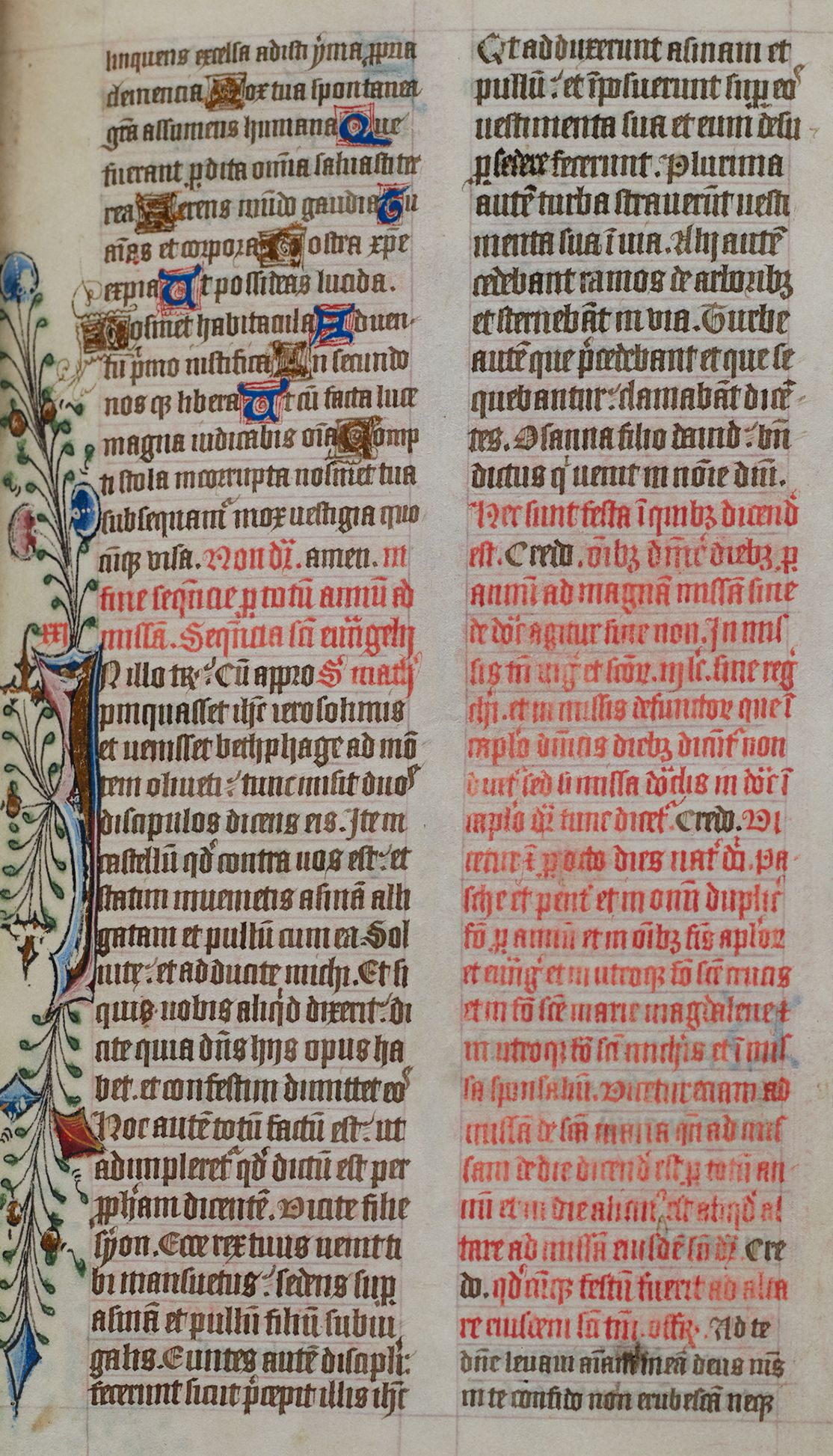
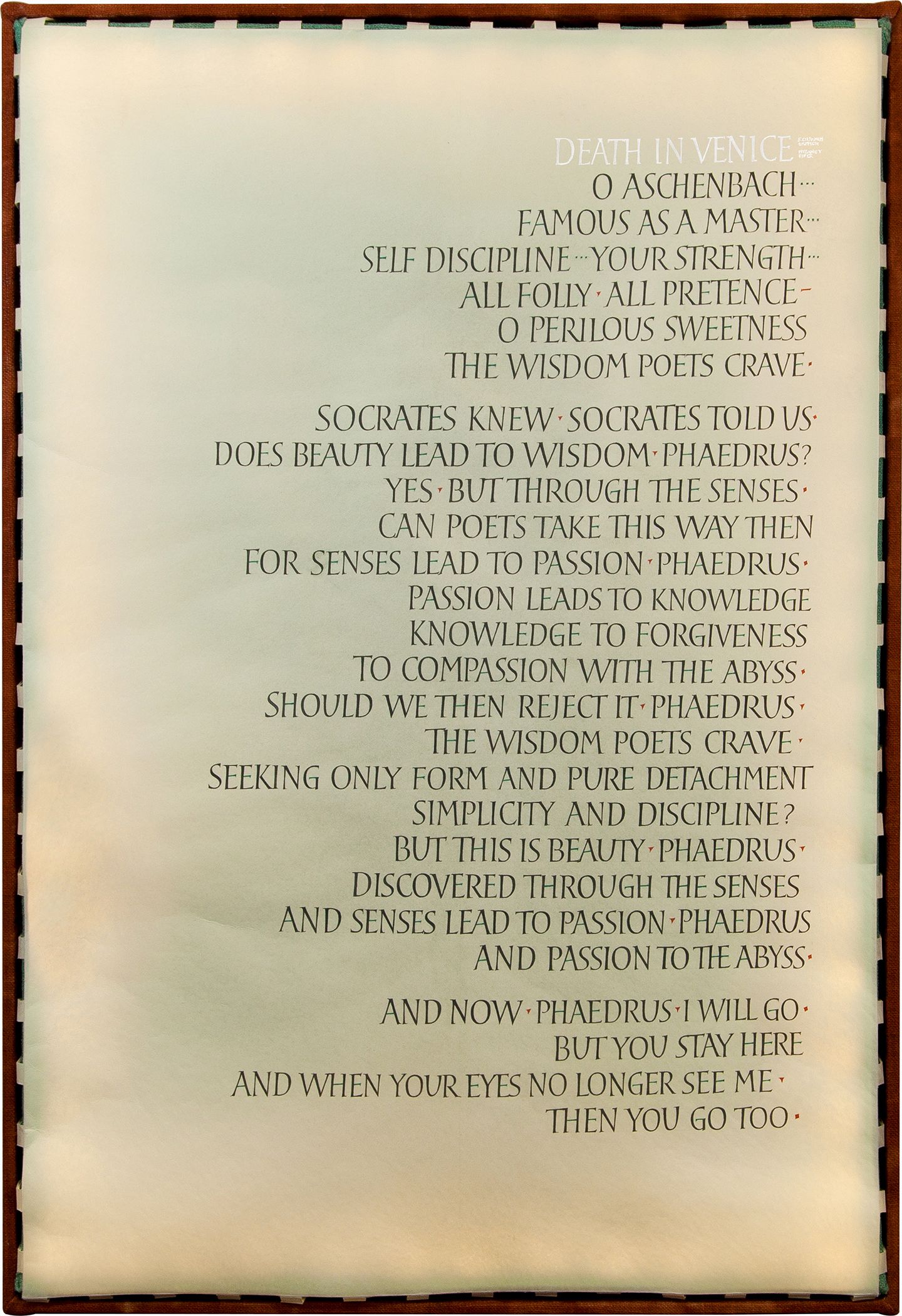
Developing Handwriting
Not all manuscripts were produced in religious settings. This volume of poetry (Trionfi, Mediaeval Manuscripts, MS 4) was copied in northern Italy by a professional scribe. In addition to its typically Italian decoration, the neat, minimalist hand is noticeably different from its Gothic counterpart, Sarum Missal (seen above).
Page from Trionfi, Italy 15th century (Mediaeval Manuscripts, MS 4)
Page from Trionfi, Italy 15th century (Mediaeval Manuscripts, MS 4)
This ‘humanist miniscule’ was developed in response to the Gothic script. It was created by Renaissance humanists who were interested in reviving antiquity and so looked back to letter forms older than the Gothic. The poet Petrarch, whose work is presented in this manuscript, was keen to develop a new script. He found Gothic frustratingly difficult to read and desired clarity. The cursive version of this script eventually created what we now know as ‘italic’.
Detail from a page of Trionfi, Italy 15th century (Mediaeval Manuscripts, MS 4)
Detail from a page of Trionfi, Italy 15th century (Mediaeval Manuscripts, MS 4)
The script would later influence the design of type for printed books, including the Roman fonts that we are familiar with today. The use of everyday Italian rather than scholarly Latin, along with the lengthy notes left by an early reader, are an indication of the spread of handwriting to new social groups.
Detail of a page from Trionfi, Italy 15th century (Mediaeval Manuscripts, MS 4), showing lengthy notes left by a previous reader
Detail of a page from Trionfi, Italy 15th century (Mediaeval Manuscripts, MS 4), showing lengthy notes left by a previous reader
Words (2013) by Manny Ling (poem by John Strachan)
Words, 2013, by Manny Ling (poem by John Strachan)
Words, 2013, by Manny Ling (poem by John Strachan)
“In calligraphy, it is important to use the right script to communicate the ‘sense’ of the text. For this collaborative project, I was working with the poet John Strachan. I initially tried many scripts to convey the feelings of his words, but none of them seemed to work. I was frustrated and almost on the verge of giving up. I realised I needed to centre myself and focus on my intentions. I tried writing again and then suddenly this new script appeared on the page. It was not until later on that I realised the shapes I was making closely resembled shapes found in nature—bamboo leaves, grass and branches. The style of this script is entirely new but it is based on the Italic hand, and I name it the Bamboo Script.”
If you'd like to share your reactions or thoughts about this piece by Manny Ling, please click here.
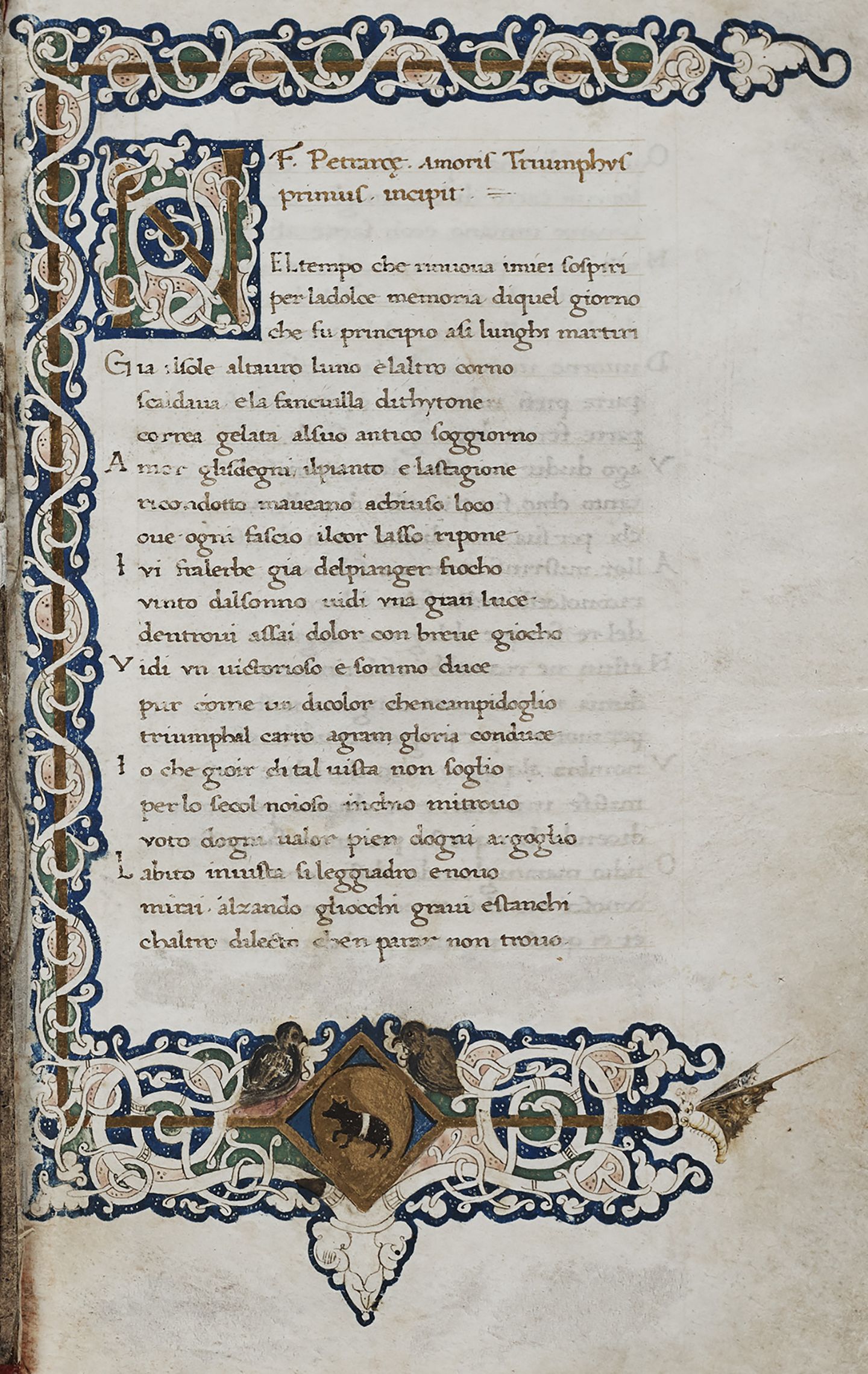


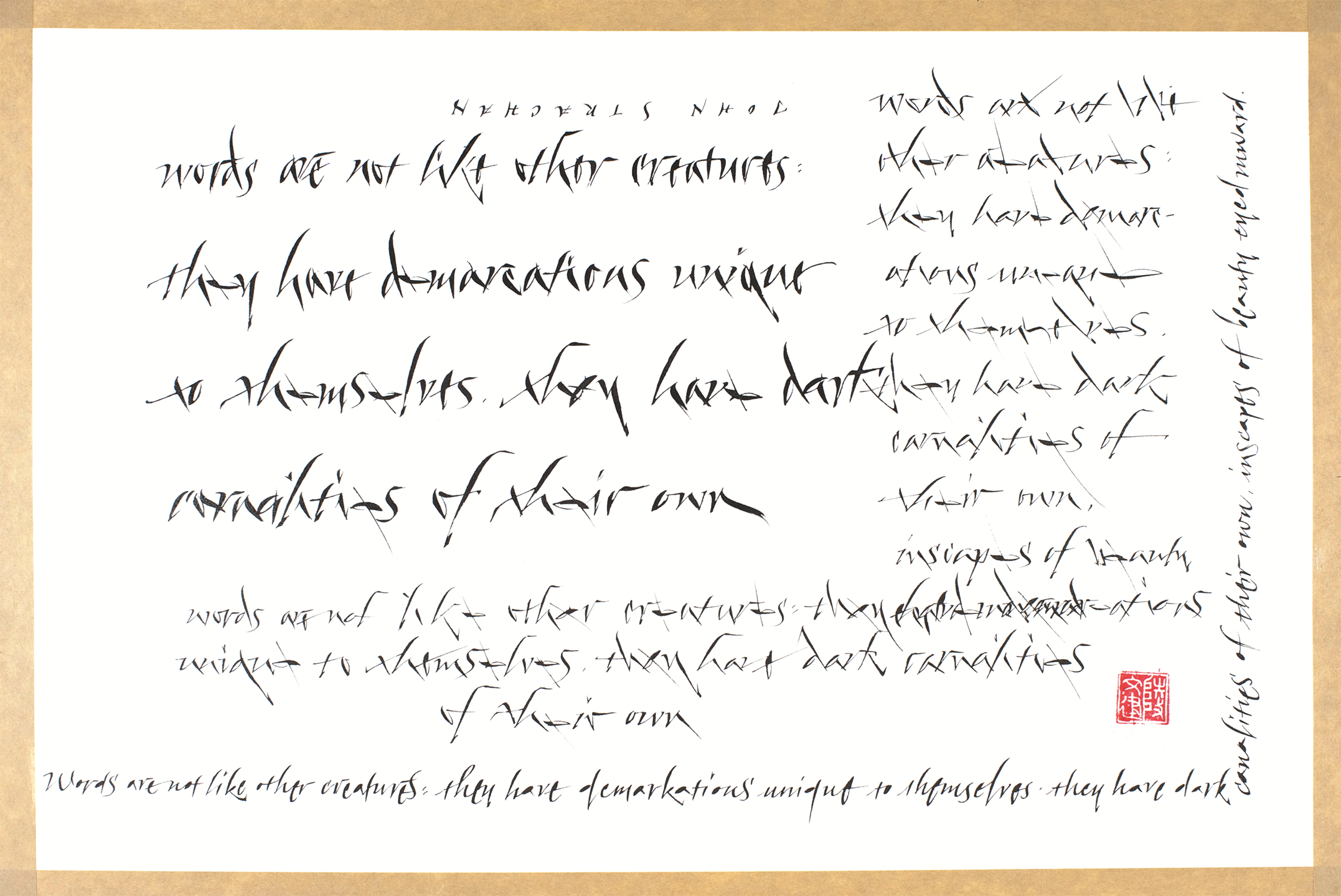
Handwriting and Print
The arrival of the printing press in Europe in the mid-fifteenth century had an impact on how books were made. Movable metal type meant that text could be arranged and printed within a few days or weeks – a much more economical and efficient process than copying by hand. Even though this type was designed to look like handwriting, writing by hand remained an essential skill; indeed, cheaper books led to increased levels of literacy, bringing handwriting to new groups of people. Handwriting also remained important in the production of printed books, where it interacted with the new printed medium in interesting ways.
A close look at this German volume (Historiae adversus paganos, Incunabula, INC 3) reveals that the printer left gaps for decorative initials, which were later added by hand in red ink.
Page from Historiae adversus paganos, Augsburg: Johann Schussler, 1471, by Paulus Orosius (Incunabula, INC 3)
Page from Historiae adversus paganos, Augsburg: Johann Schussler, 1471, by Paulus Orosius (Incunabula, INC 3)
Scribes were hired to decorate printed books or sometimes to copy out a printed book entirely by hand. Scribal work on printed books looks back to their roles before the invention of print and demonstrates their abilities to adapt and change in response to the new technology.
Detail of a page from Historiae adversus paganos, Augsburg: Johann Schussler. 1471, by Paulus Orosius (Incunabula, INC 3)
Detail of a page from Historiae adversus paganos, Augsburg: Johann Schussler. 1471, by Paulus Orosius (Incunabula, INC 3)
Titling for Lindisfarne Visitor Map and Guide (2019) by Tim Sokell
Lindisfarne Holy Island visitor map and guide, titling by Tim Sokell, 2019
Lindisfarne Holy Island visitor map and guide, titling by Tim Sokell, 2019
“I was asked to design a piece of titling for a new printed visitor map and guide to Lindisfarne. For the lettering I researched elements from The Lindisfarne Gospels, following letterforms and colour palettes from various ‘carpet pages’ in the original medieval book. I wanted my solution to reflect the connection to Lindisfarne both in history and in writing.”
Mock-up of design for titling of Lindisfarne visitor map and guide, 2019, by Tim Sokell
Mock-up of design for titling of Lindisfarne visitor map and guide, 2019, by Tim Sokell
Titling for Lindisfarne visitor map and guide, 2019, by Tim Sokell
Titling for Lindisfarne visitor map and guide, 2019, by Tim Sokell
If you'd like to share your reactions or thoughts about this piece by Tim Sokell, please click here.
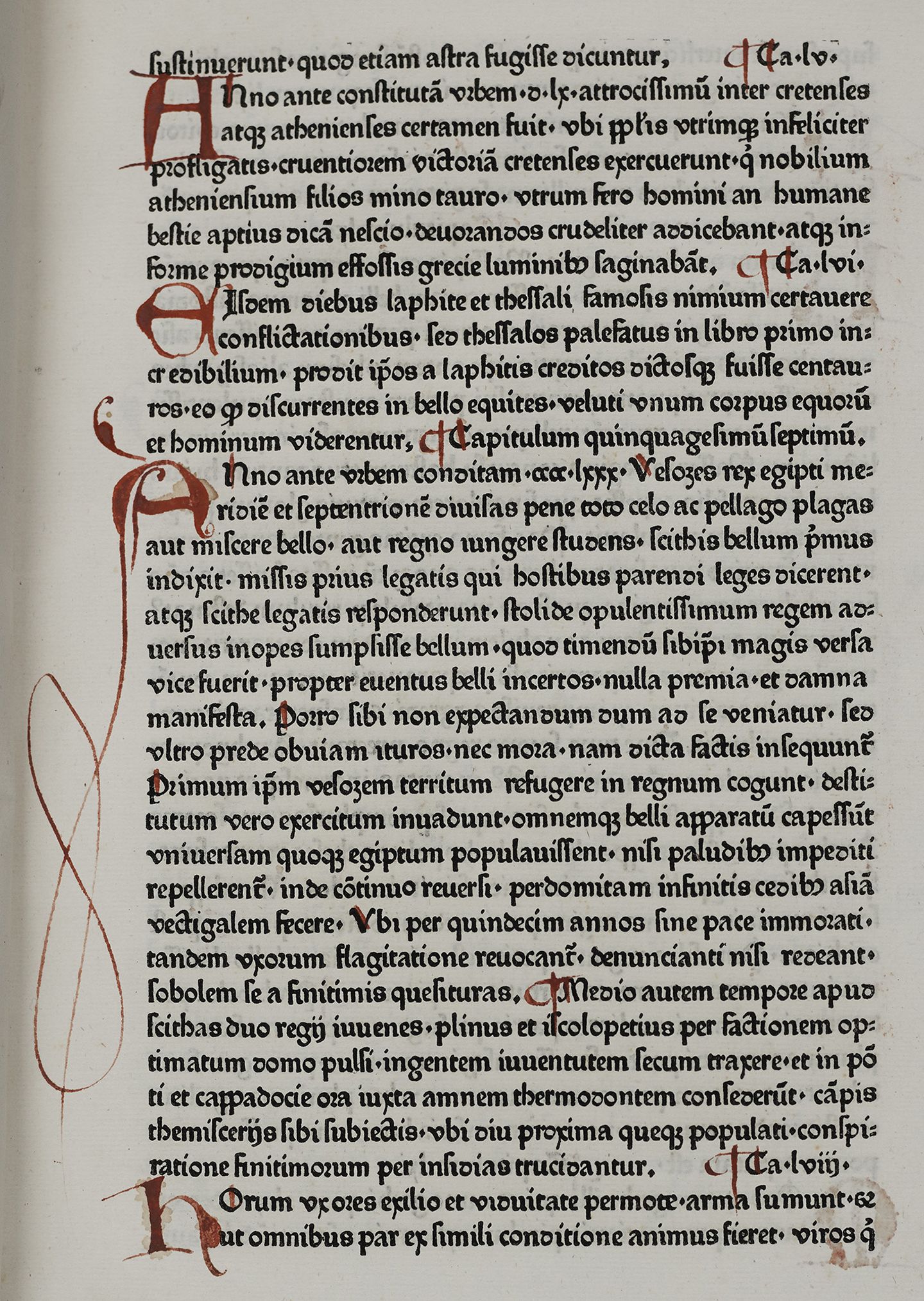
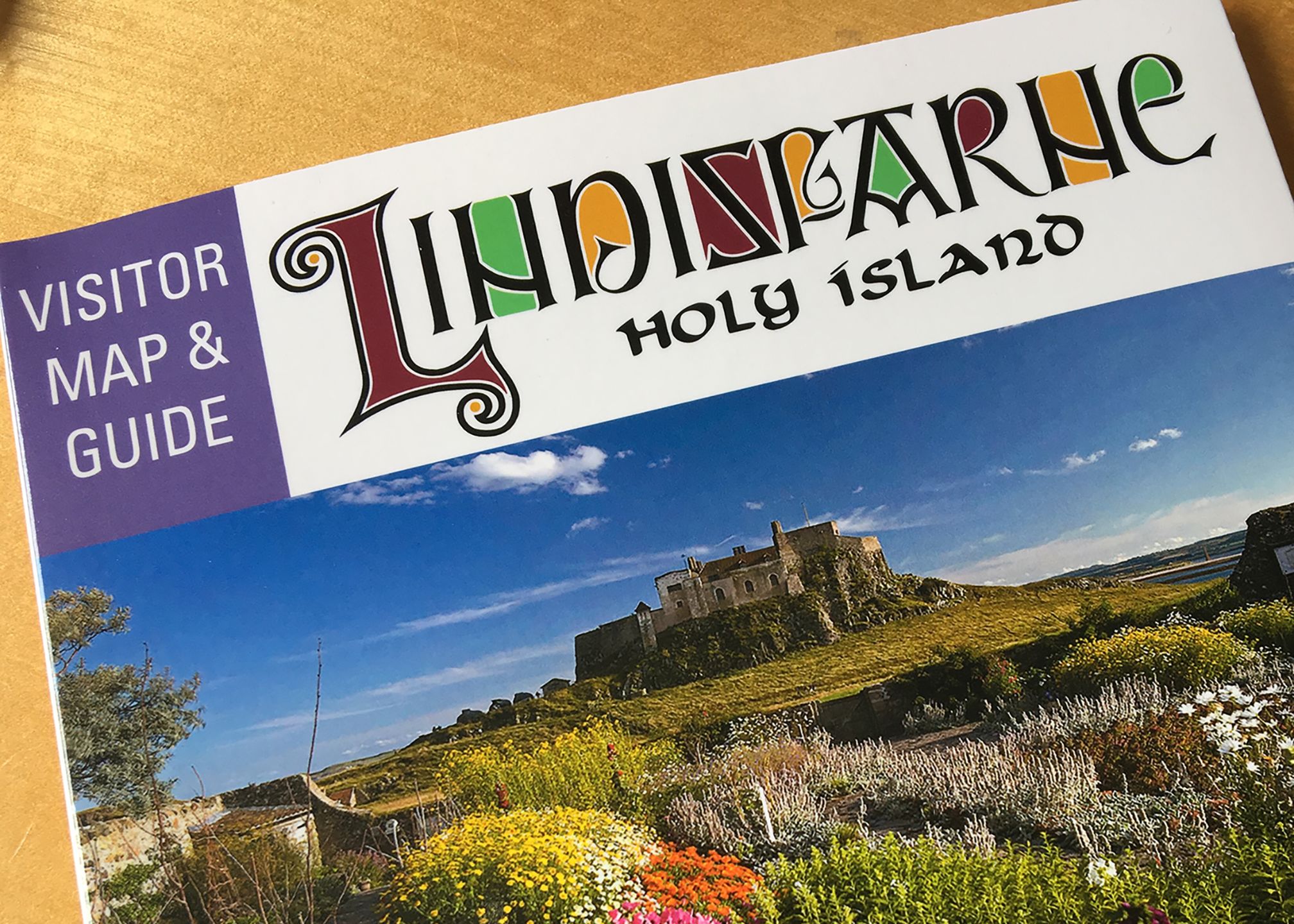
The Human Touch
One area where handwriting continued to dominate following the introduction of print was private correspondence. Writing a letter by hand was not only relatively quick and practical, but also ensured a personal and emotional touch; even today, we consider a handwritten letter or card to be more intimate than email.
This letter (Miscellaneous Manuscripts, MSS 17) was sent in 1662 by Katherine Fenwick, daughter of the Northumberland landowner and politician Sir John Fenwick, to her cousin Edward Moore. It begins “My Constant Valentine”: an indication not of romantic attachment, but rather the deeply personal friendship between the two correspondents.
Letter from Katherine Fenwick to Edward Moore, 1662 (Miscellaneous Manuscripts, MSS 17)
Letter from Katherine Fenwick to Edward Moore, 1662 (Miscellaneous Manuscripts, MSS 17)
Letter from Katherine Fenwick to Edward Moore, 1662 (Miscellaneous Manuscripts, MSS 17)
Letter from Katherine Fenwick to Edward Moore, 1662 (Miscellaneous Manuscripts, MSS 17)
Poland Map (2015) by Cherrel Avery
Poland map, 2015, by Cherrel Avery
Poland map, 2015, by Cherrel Avery
“This piece was commissioned for a national touring exhibition commemorating the liberation of survivors from the concentration camps. The focus was on hundreds of orphans who were brought to UK. The pre-war map of Poland was created from over 350 names of the children who were born in that country.
Writing the names by hand necessitated a skilled approach and many hours of concentrated work. This took the finished piece from a neutral printed list to a work with visual and emotional significance, with an unspoken message of respect for each and every person inscribed.
This ‘human touch’ helped viewers to share in the celebration of these lives and give families a sense of pride and joy in seeing the names of their loved ones memorialised in this way.”
If you'd like to share your reactions or thoughts about this piece by Cherrell Avery, please click here.
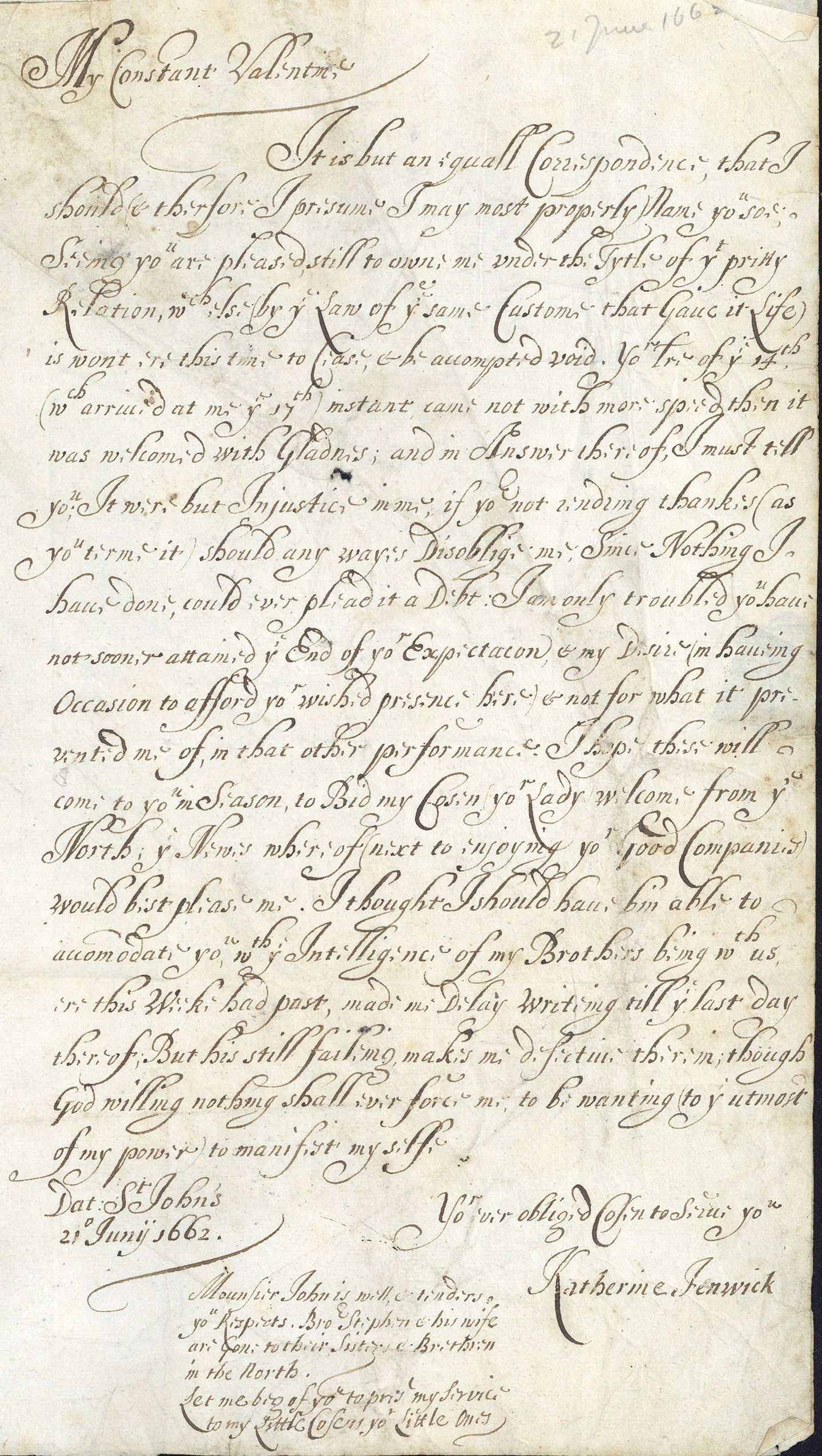
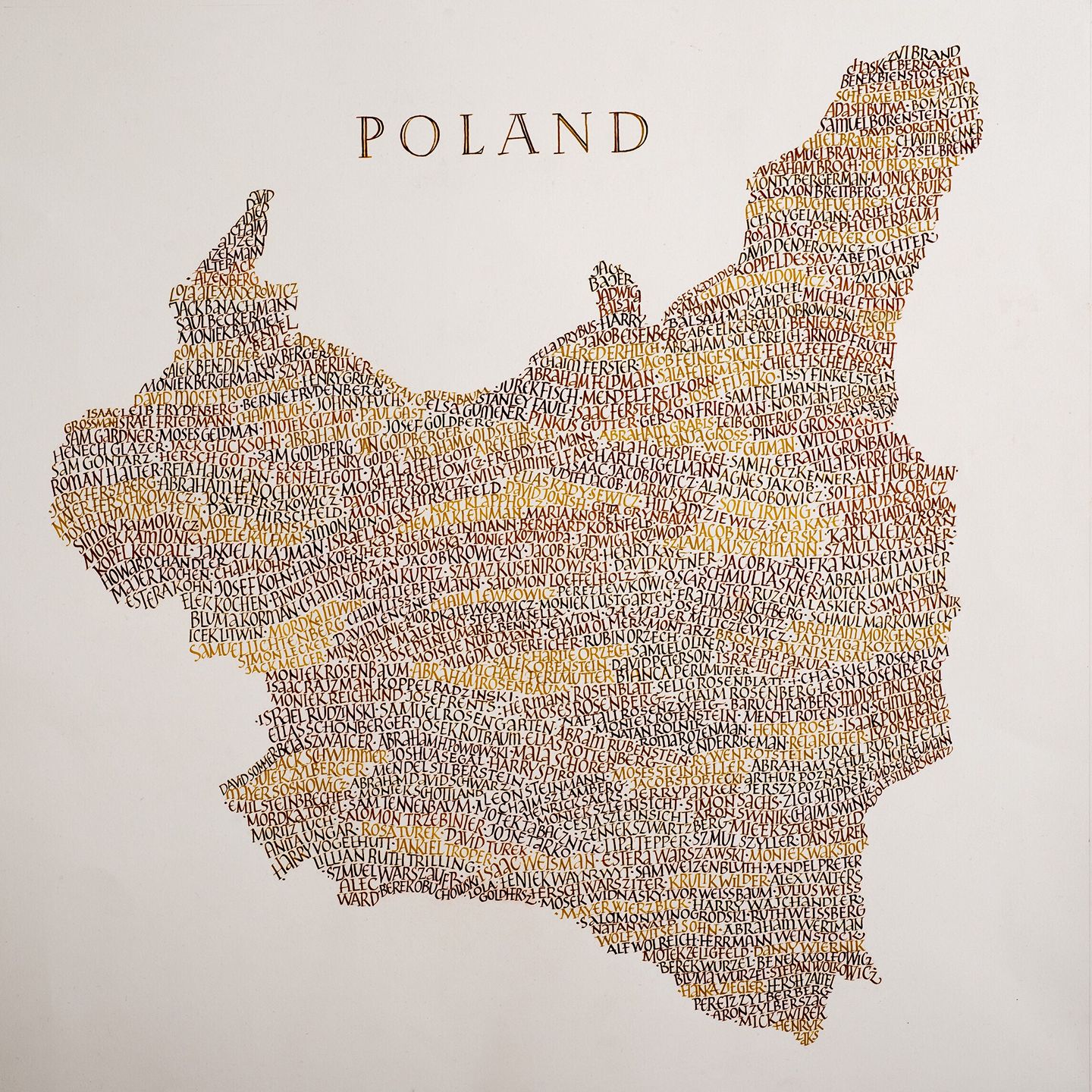
Individuality and Security
For centuries handwriting has remained crucial for validating legal documents, whether they carry financial value or privileges or enforce punishments and fines.
These two bonds (below) were issued in England in 1696 and 1735 (Miscellaneous Manuscripts, MSS 24). Although the later document was printed, it was devoid of any legal value until it had been completed by hand and signed in the presence of a witness.
Printed bond, 1735 (Miscellaneous Manuscripts, MSS 24)
Printed bond, 1735 (Miscellaneous Manuscripts, MSS 24)
It closely mirrors the format of its handwritten predecessor: from the layout, size and wording of the text to the position of the official seal. As with modern cheques, it was common to draw a line through any blank spaces so that the bond could not be altered at a later date.
Handwritten bond, 1696 (Miscellaneous Manuscripts, MSS 24)
Handwritten bond, 1696 (Miscellaneous Manuscripts, MSS 24)
Design for new Scottish banknotes (2015) by Susie Leiper
Designs for new Scottish banknotes, 2015, by Susie Leiper
Designs for new Scottish banknotes, 2015, by Susie Leiper
“Handwriting is proof of our identity as an individual: our handwritten signature serves as a form of security. So, in 2015, when the Royal Bank of Scotland invited me to produce handwritten poetry for their new polymer banknotes this was not simply an aesthetic choice. My handwriting, in Scottish secretary hand, is one of its many security features.
The choice of script was significant: secretary hand is both gracefully gestural and pretty illegible, as well as being relevant for a Scottish bank. In the 16th and 17th centuries this was the speedily written hand of the business scribe, as opposed to the more formal scripts used in manuscript books.
I believe that today handwriting should be encouraged as a mirror of our individuality, as well as a mental and physical discipline to aid coordination and relaxation.”
If you'd like to share your reactions or thoughts about this piece by Susie Leiper, please click here.
